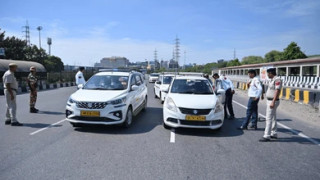
Ratan Tata last rites (ANI)
Parsi funeral tradition: Ratan Tata, the iconic industrialist and philanthropist, passed away in Mumbai on Wednesday. His funeral was held at the Worli crematorium, in accordance with the evolving Parsi customs. While Tata's mortal remains will be cremated, traditionally the Parsi community, adherents of Zoroastrianism, has followed a unique ritual that neither involves burial nor cremation, preserving the sacredness of earth, fire, and water.
Tata’s cremation signifies a shift that has been taking place within the Parsi community over the years. An increasing number of Parsis are opting for cremation rather than following the orthodox Zoroastrian funeral ritual known as Dokhmenashini. This ancient practice, still observed by traditionalists, involves placing the deceased in the Tower of Silence (Dakhma) where the body is exposed to scavenger birds like vultures.
In the Dokhmenashini ritual, the deceased is prepared through ritual prayers and cleansing, and then carried to the Dakhma by specially appointed pallbearers, known as Nassesalars. The body is left atop the tower, allowing natural elements and scavenger birds to decompose it. This practice reflects the Zoroastrian belief in preserving the sanctity of the earth and fire, which are considered sacred. The custom is designed to avoid contamination of the elements with a corpse.
However, in urban areas like Mumbai, where traditional Towers of Silence are located, there has been a marked decline in vulture populations. This has led to challenges in maintaining the Dokhmenashini practice. Modern alternatives, such as solar concentrators, have been introduced to aid in the decomposition process.
Despite these adaptations, the decline of vultures has prompted many Parsis to consider other funeral methods, including cremation. Environmental concerns and practical issues have led to the increasing use of electric crematoriums, particularly after the 1990s.
The Parsi community's decision to move toward cremation, as seen in Tata's funeral arrangements, illustrates the delicate balance between maintaining ancient religious traditions and adapting to modern realities. While many Parsis still adhere to the traditional practice of Dokhmenashini, a growing number are embracing cremation due to the changing environment and urbanization.













Copyright © 2025 Top Indian News
